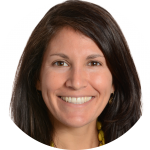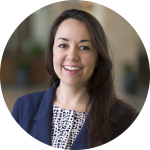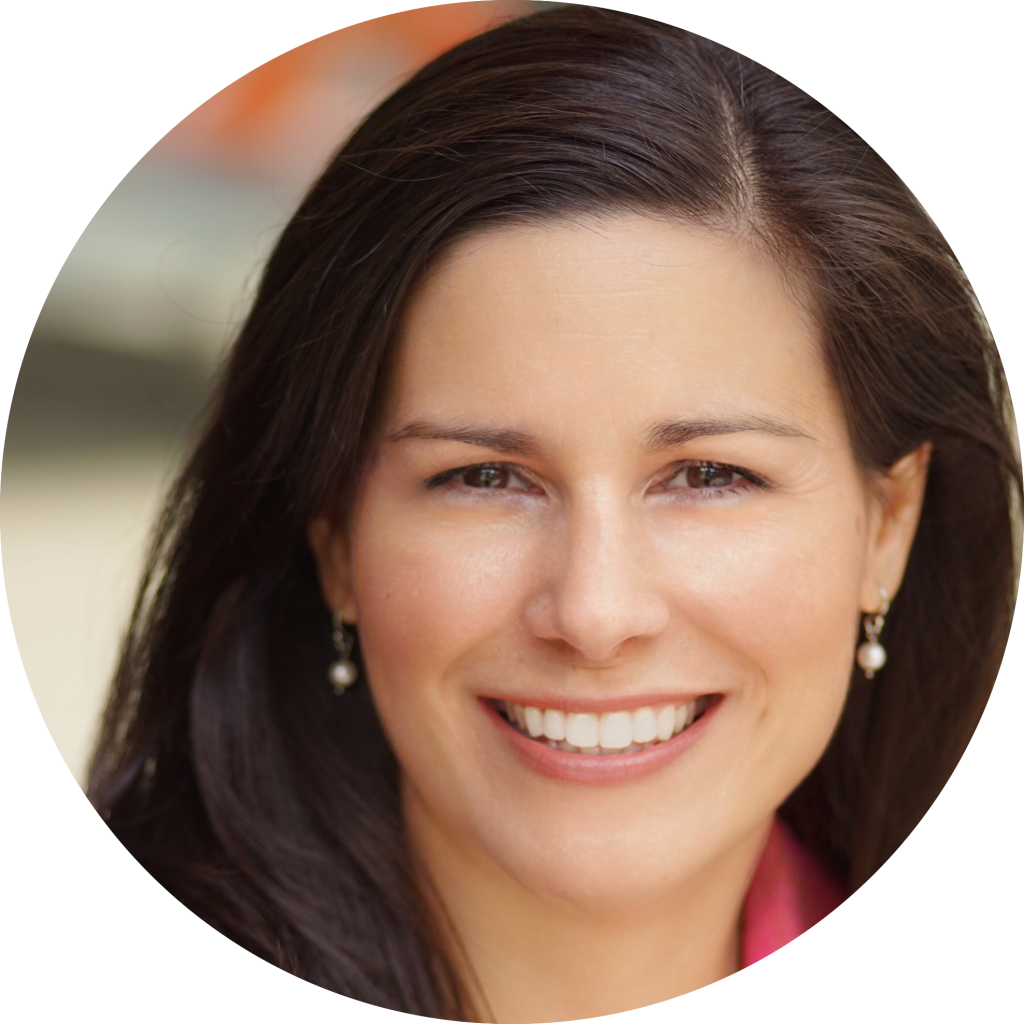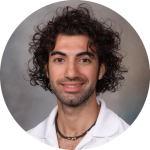New Chapter Stories

Mark Tyson II, M.D. (PRES ’11, U ’15), can point toward several mentors or colleagues for significantly influencing the direction of his career. He started out as an atmospheric sciences major in college, but the major was canceled during his first year. He says he tried a lot of different experiences to learn what he had a passion for. “I threw a lot of things against the wall to see what stuck.” Two work colleagues insisted he look into medical school. During medical school, another encouraged him to pursue his specialty area. After seeing “what stuck” and heeding the advice of others, he found his niche in urology at Mayo Clinic in Arizona.

Michelle Wyatt, M.D. (MED ’14, OBG ’18, MFM ’21), trained at Mayo Clinic in Rochester for 11 years and then embarked on establishing a maternal-fetal medicine practice from scratch at Essentia Health in Fargo, North Dakota. Two years later, she has a full practice that allows patients to stay within the Essentia system for maternal-fetal medicine care.
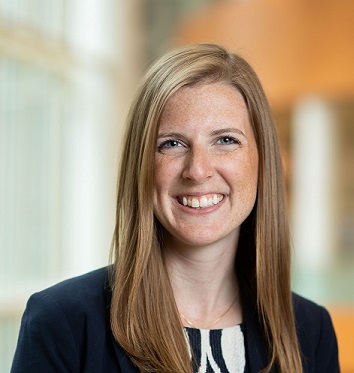
Courtney Harris, M.D. (I ’19), has a passion for medical education, advocacy, and leadership. During her residency and chief residency at Mayo Clinic in Rochester, she helped to restructure the quality improvement curriculum for internal medicine residents and developed a lecture on career goal-setting and professional development. She also became involved with the American College of Physicians and helped create a council for residents and fellows in Minnesota’s four internal medicine training programs. During fellowship at Massachusetts General Hospital and Brigham and Women’s Hospital in Boston, she served on the American College of Physicians national Council of Resident/Fellows Member. This summer, she’s starting as a new program director for the transplant infectious disease fellowship at the Medical University of South Carolina, recruiting their first transplant infectious disease fellow for 2024. She’s particularly interested in attracting more fellows into infectious disease careers to help address the national shortage of ID physicians.
When Stella Hartono, M.D., Ph.D. (IMM ’17, MED ’17), was a child in Indonesia and later in California, her parents told her that girls didn’t go into science. Instead, they focused on when she would get married. She’d always liked science but heeded her parents’ guidance and pursued accounting in college and worked in finance for several years. She says she was paid well but didn’t feel like she was exercising all the parts of her brain. She went back to college, where she pursued chemistry and microbiology, and then to Mayo Clinic in Rochester for M.D. and Ph.D. degrees, followed by residency in the pediatrician scientist training and development program at Baylor College of Medicine in Houston, Texas. Today, she’s a clinical fellow at the National Institute of Allergy and Infectious Diseases (NIAID) at the National Institutes of Health (NIH), investigating allergic responses to COVID-19 vaccines. Dr. Hartono looks forward to a career in research to provide answers for patients who have none.
Alaa Koleilat, Ph.D. (CTSA ’20), is a laboratory genetics and genomics fellow in the Department of Laboratory Medicine and Pathology at Mayo Clinic in Rochester. Dr. Koleilat was chosen by her peers in the Mayo Clinic Graduate School of Biomedical Sciences to deliver the commencement address, which was delayed by a year in her case and was virtual. Dr. Koleilat encouraged her fellow graduates to be leaders committed to an inclusive environment. “The legacy we leave behind will dictate the future of science and medicine.” She also invoked her love of the Marvel Universe in her remarks: “As Spiderman’s uncle said, ‘With great power comes great responsibility.’ As graduates from the best hospital in the country, we will be expected to lead the scientific community. However, I want to encourage everyone to lead with kindness. Lead with empathy. Lead with humanity.” Well said.
Rebekah Samsonraj, Ph.D. (OR ’16), focused her early work on determining the potency of mesenchymal stem cells (MSC), including identifying a novel genomic DNA biomarker. She developed and patented a method to identify stem cells with improved bone-forming ability, which led to the identification of a novel genomic biomarker to assess MSC potency. In the last year, she moved from Mayo Clinic to the University of Arkansas, where she established a lab in the Department of Biomedical Engineering. Dr. Samsonraj looks forward to supporting her trainees the way her mentors supported her, including introducing her to leaders in the field as an up-and-comer. “My students’ success is my success,” she says. “Our research must be sustained and continued by the next generation of talented researchers. I want to do whatever it takes to transform the world to be a better place for the generations to come. That involves seeing my graduate students be more successful than I am.” They have big shoes to fill if Dr. Samsonraj’s career trajectory continues.
When Dame Idossa, M.D. (I ’19), was a child in Ethiopia, the professionals she saw looked like her, and she looked like them. That wasn’t the case when her family moved to the U.S. She had more difficulty seeing herself in the career she envisioned. The trajectory of her life changed when she participated in a Minnesota Future Doctors program at the University of Minnesota and Mayo Clinic. She says the experiences she had in the program allowed her to dream and explore possibilities, including training at Yale and Mayo Clinic. Dr. Idossa is now a clinical fellow in oncology at the University of California San Francisco (UCSF), specializing in breast cancer. After her fellowship, she plans to work in academic medicine, treating breast cancer and researching ways to narrow disparities in breast cancer.
Ajay Sahajpal, M.D. (TRNS ’08), the son of an immigrant teacher, says he’s living the American dream. He followed in the footsteps of his cousins in becoming a physician and only deviated from that plan in terms of his specialty — pursuing liver transplant surgery instead of family medicine or emergency medicine. He credits relationships with mentors at Mayo Clinic with assisting in career development and practice philosophy. “I practice in the ways instilled in me at Mayo Clinic,” he says. Today, Dr. Sahajpal is medical director of the Abdominal Transplant and Hepatobiliary Program at Aurora St. Luke’s Medical Center in Milwaukee, Wisconsin, and is cutting his teeth in administration.
Doug Simonetto, M.D. (I1 ’10, I ’12, GI ’15, HEPT ’16, CTSA ’24), became intrigued with research being conducted at Mayo Clinic when he was a medical student in Brazil. He did an away rotation at Mayo in 2007 and says he was blown away by the people, culture, patients and resources. He didn’t want to train anywhere else and says he’s grateful Mayo Clinic gave him an opportunity. Mayo’s investment seems to have paid off. During internal medicine residency, Dr. Simonetto received two ACE (Attitude, Commitment and Excellent) Awards from his peers and the Emerging Liver Scholar Award from the American Association for the Study of Liver Diseases (AASLD). During his fellowships in gastroenterology and hepatology and transplant hepatology, he received two travel awards, the AASLD Resident/Fellow Ambassador award and Advanced/Transplant Hepatology Fellowship Award, the Golden Plunger Award from his division peers and the Eugenie Bolz Award for excellence in patient care. Now he is program director for Mayo Clinic’s Gastroenterology and Hepatology Fellowship and an active researcher in the areas of portal hypertension and alcohol-associated cirrhosis. We have a feeling he’s just getting started.
Andrea Tooley, M.D. (I ’15, OPH ’18), says she didn’t foresee a role for herself in education. But she took advantage of an opportunity that came her way and is now associate program director of Mayo Clinic’s Ophthalmology Residency Program. She developed an annual anatomy course and skills check-off event for ophthalmology — Ophthalmology Olympics. She also started a much-needed virtual ophthalmology mentorship program to assist medical students across the country who missed out on away rotations and networking at conferences due to the pandemic. Dr. Tooley also is an ad hoc national media spokesperson for the American Academy of Ophthalmology and active on social media to educate followers about ophthalmology and other medical topics. Sounds like she’s deep in the education shield to us.
Lauren Dalvin, M.D. (I1 ’14, OPH ’17), arrived at Mayo Clinic at the right time. Jose Pulido, M.D. (OPH ’04, Mayo Clinic Emeriti Staff), was planning to transition out of his practice. He taught her about ocular oncology and suggested she train with the ocular oncologist who trained him. Several years later and Dr. Dalvin is the only fellowship-trained ocular oncologist in Minnesota — her dream job. She figures she has at least three decades to pay it forward to train the next generation of ophthalmologists and ocular oncologists.
Ryan Donohue, Ph.D. (VGT ’19), got a taste of government while pursuing his Ph.D. at Mayo Clinic. He got his feet wet as co-president of the Graduate School Association at Mayo Clinic Graduate School of Biomedical Sciences, and then participated in advocating for science on Capitol Hill. When an opportunity arose to pursue an American Association for the Advancement of Science fellowship, he seized the day. Now, he’s in Washington, D.C., working as a policy fellow in the White House Office of Science and Technology Policy, whose mission is to advise the president and executive office members on scientific and technological matters.
Samuel Sarmiento, M.D. (PRES ’14), is full of surprises. A second-generation physician from Ecuador, he pivoted away from medicine after his internship year. He wasn’t keen on a career of 10-hour days in the OR. After an M.P.H., M.B.A. and postdoctoral research fellowship at Johns Hopkins, he founded a consulting company. Around that time, he met the love of his life in a nontraditional way – on an Airbnb-like app that facilitates global hospitality and cultural exchanges. Time will tell what’s in store for this adventurous spirit.
Erin Gillaspie, M.D. (TS ’16), thoracic surgeon at Vanderbilt University Medical Center in Nashville, Tennessee, watched her first orthopedic surgery at age 12 and was sold on a surgical career. “I wanted to have that kind of impact on patients’ lives,” she says. Her overachiever nature is evident from her CV, which is sprinkled with mentions of student of the year, state champion, president’s list, dean’s list, surgical intern of the year, excellence in research award, scholarship recipient and young investigator award. She’s only four years out of training and already has developed a robotic thoracic surgery program at Vanderbilt — a field she trained in at Mayo Clinic. Dr. Gillaspie says she is creating a mini-Mayo Clinic at Vanderbilt. If anyone can do it, she can.
Shawn Vasoo, M.B.B.S. (CM ’13, IDOR ’14), pursued medicine because he was interested in science and working with people. He pursued training in infectious diseases and microbiology in the U.S., unlike most of medical trainees in Singapore. He trained at Mayo Clinic for the opportunity to be mentored by world-renowned experts. He returned to Singapore to practice and had just been appointed clinical director at the National Centre for Infectious Diseases when the pandemic hit. They saw several of the first cases outside of China. Most of the patients requiring hospitalization have been at his hospital. Dr. Vasoo shared his experiences with colleagues at Mayo Clinic as COVID-19 struck the U.S. and learned from Mayo at the same time. “As a global community, we needed to learn and share for the good of patients,” he says. Dr. Vasoo says his training at Mayo Clinic prepared him to face the challenges of his new job.
Alyx Porter Umphrey, M.D. (I1 ’04, N ’07, NONC ’08), believes in giving back. When she was an undergrad at Spelman College in Atlanta, a Historically Black College and University, she received the Presidential Scholarship that covered her tuition, room and board. She didn’t have that kind of financial support during medical school. Together with her physician husband, they accrued $500,000 in debt during medical school alone. When they’d paid it off, she gave back to Spelman, establishing an annual scholarship for a premed student as well as a named endowed scholarship. Recently, she and her husband started a nonprofit organization, ElevateMeD, to support students from underrepresented backgrounds in medicine. They aim to prioritize physician workforce diversity, close the gap of financial inequity in medical education and empower the next generation of physician leaders. Dr. Porter Umphrey doesn’t stand out only in her philanthropy. She also is one of only three black women in the U.S. practicing neuro-oncology.
During her postdoctoral research fellowship at Mayo Clinic, Sarah Greising, Ph.D. (PHYS ’16), says she learned the value of collaboration. “It’s the norm at Mayo to pick up the phone if you hear that someone is working in an area you’re interested in and ask how you can collaborate.” In her laboratory at the University of Minnesota, she carries on that tradition. “You have to decide what kind of scientist you want to be — working in your own scientific world or realizing that the questions in the scientific community can’t be answered by you alone and that collaborative effort is better.” Dr. Greising recently was appointed as a McKnight Land-Grant Professor from the University of Minnesota, a program to strengthen and advance the careers of the most promising junior faculty members who are at the beginning stages of their professional careers and who have the potential to make significant contributions to their departments and scholarly fields.
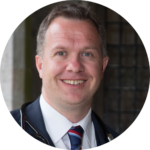 Derek O’Keeffe, M.B., B.Ch., M.D., Ph.D.
Derek O’Keeffe, M.B., B.Ch., M.D., Ph.D.
Derek O’Keeffe, M.B., B.Ch., M.D., Ph.D. (ENDO ’15), calls himself a physicianeer. One might call him the Energizer Bunny — he keeps going and going and going. He says he learned an important mantra during postdoctoral training at Harvard: “Don’t just talk about it — get up and do it.” In addition to training in his native Ireland, he has trained at Oxford University in England, the University of New South Wales in Australia, Lomnosov University in Russia, Harvard and Mayo Clinic in Rochester, Minnesota. He’s not done yet — he’s planning to pursue an M.B.A. in 2021. He combines clinical practice with an engineering background to develop innovative devices that solve problems encountered in medical practice. He’s a black belt tae kwan do instructor, triathlete, pilot, advanced scuba diver and expert gardener. Dr. O’Keeffe subscribes to Michelangelo’s motto “Ancora imparo” — I am still learning.
Majd El-Harasis, M.B.B.S. (I ’19), was born in New Jersey, where his Jordanian father was training to become a cardiologist. The family moved back to Jordan in 2001, where the elder Dr. El-Harasis continues to practice today. The younger Dr. El-Harasis, also drawn to medicine, attended college and medical school in London, England. He was sold on Mayo Clinic after a one-month visiting medical student rotation and subsequently applied for residency. As a senior resident in Internal Medicine, he received the Outstanding Achievement Award and Outstanding Teacher Award from the department. Now at Vanderbilt University Medical Center in Nashville, Tennessee, for a cardiovascular disease fellowship, Dr. El-Harasis says he left a huge part of his heart at Mayo Clinic.
Spyridoula Maraka, M.D. (CTSA ’16, ENDO ’16), found her research passion at Mayo Clinic. While an endocrinology fellow, she discovered a gap in the knowledge about subclinical hypothyroidism during pregnancy and became determined to fill the gap. Her studies led to high-impact publications, requests for presentations of her work, national media coverage and citations in international treatment guidelines. Today she’s an assistant professor of medicine at the University of Arkansas for Medical Sciences (UAMS), the UAMS endocrinology fellowship director and a Mayo Clinic research collaborator. She describes her time at Mayo Clinic as a golden opportunity. That certainly seems to have been the case for her.
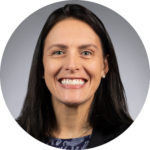
When Jacqueline Limberg, Ph.D. (ANES ’16), received the Mayo Clinic Alumni Association Edward C. Kendall Award for Meritorious Research in 2016, she said, “I want to be an example of a successful woman researcher who has a family and healthy life balance. Typically, women with families aren’t well represented in large research universities. In higher-level graduate courses, few full-time research faculty are women. We need women role models in the classroom and in labs.” In the several years since then, Dr. Limberg has expanded her family from two to three children, established a lab at the University of Missouri, received the Shih-Chun Wang Young Investigator Award from the American Physiological Society and received a prestigious National Institutes of Health R01 grant. Dr. Limberg, the first in her family to go to college, credits mentors with showing her the way and keeping her on course on her pathway to success.
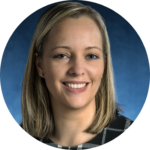 Patricia (Trish) Simner, Ph.D.
Patricia (Trish) Simner, Ph.D.
Patricia (Trish) Simner, Ph.D. (CM ’13), completed her undergraduate, master’s and Ph.D. programs at the University of Manitoba, Canada, where she’s from. She says people who review her CV skim over those parts of her training because they don’t know a lot about Canadian education institutions. They take notice, however, when they get to the Mayo Clinic portion, she says. Dr. Simner completed a fellowship in clinical microbiology at Mayo Clinic Graduate School of Biomedical Sciences. She’s now director of the Medical Bacteriology and Infectious Disease Sequencing Laboratories in the Division of Medical Microbiology, Department of Pathology at Johns Hopkins Hospital. She also mentors Ph.D. students to pay forward the helping hand that was instrumental in her career success.
Olufunso Odunukan, M.B.B.S. (I ’12, CV ’16), completed almost 20 years of training a couple of years ago and is enjoying the freedom to decide where he lives and no longer having to delay gratification in his personal life. He is newly married, practicing interventional cardiology in the Atlanta area, operating a nonprofit organization to improve cardiovascular care in Africa and looking ahead to the day when he returns to his native Nigeria to set up a cardiac center.
Elena (Ellie) Jelsing, M.D. (MED ’08, PMR ’12, SPMED ’13), is a physical medicine and rehabilitation (PM&R) and sports medicine physician at Mayo Clinic Sports Medicine in downtown Minneapolis — a state-of-the-art facility providing comprehensive world- class sports medicine care at Mayo Clinic Square. Mayo is the exclusive medical provider for the NBA Minnesota Timberwolves and WNBA Minnesota Lynx, and Dr. Jelsing serves as the orthopedic team physician for the Lynx. Both teams have practice facilities and corporate offices in Mayo Clinic Square. Dr. Jelsing is also the head team physician for the USA Women’s Ski Jumping team.
Daniel Chan, M.D. (MED ’11, I ’14, CI ’15, GI ’17), spent 10 years training at Mayo Clinic — medical school, residency and fellowship. He and his wife had a baby son when they arrived in Rochester, Minnesota, and had three more sons during Dr. Chan’s training. When training was done, quality of life was uppermost on his mind. He wanted to pay back his family for a decade’s worth of sacrifices. Off to Hawaii the family went — to live, not just visit. While practicing medicine in Hawaii is not without challenges, Dr. Chan says it’s well worth it. His sons know him as more than a dad who works all the time. And Dr. Chan says he’s lucky to be surrounded by Mayo Clinic alumni in his practice.
Jasmine Marcelin, M.D. (I ’14, CTSA ’16, INFD ’17), trained at Mayo Clinic because it was one of few U.S. medical centers to offer an accessible, affordable away rotation with hands-on clinical experience for international students. After a month focusing on infectious diseases in Rochester, Minnesota, she was hooked — on the specialty and on Mayo Clinic. She adjusted her residency plans and applied to Mayo Clinic. She stayed on for an infectious diseases fellowship. Dr. Marcelin recalls the support of a Mayo Clinic physician, who described her as having a fire in her belly. Today, at the University of Nebraska Medical Center, Dr. Marcelin describes her work in infectious diseases, diversity and inclusion, and resident medical education as inspiring and lighting her fire.
Neil Anderson, M.D. (CM ’14), had an unusual upbringing. He grew up at a zoo — literally. His father was a zoo director, and the family lived on site, had free run of the zoo and volunteered there. Dr. Anderson transferred his interest in veterinary medicine and biological diversity into a career in pathology and clinical microbiology. Today he’s assistant medical director of the Microbiology Laboratory and medical director of the Molecular Infectious Disease Laboratory at Washington University School of Medicine in St. Louis. Coming full circle, Dr. Anderson says as a microbiologist, he has his own little zoo of microorganisms.
Zaraq Khan, M.B.B.S. (OBG ’11, CTSA ’15, REPR ’15), is a man of many interests. He considered becoming a chef or an electronic dance music (EDM) DJ before deciding on medicine. He played on the national water polo team and swam at the national level in Pakistan. Growing up in Pakistan and London, he came to the U.S. for residency and fellowship. With additional training in Europe, he paved his way in a new specialty in reproductive surgery. He’s one of a handful of U.S. surgeons providing frozen ovarian tissue transplantation for fertility preservation and one of the few reproductive endocrinology and infertility specialists around the world with advanced training in minimally invasive gynecologic surgery, which allows him to treat aggressive fibroid disease and advanced stage endometriosis without sacrificing fertility. He is working on developing a uterus transplant program. Dr. Khan never envisioned himself in the Midwest but says he loves Mayo Clinic’s primary value, focus on teamwork and nice people. “People here do amazing work and are happy.”
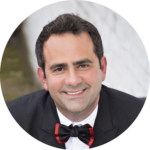 Charalambos (Babis) Rammos, M.D.
Charalambos (Babis) Rammos, M.D.
Charalambos (Babis) Rammos, M.D. (PLS ’15), grew up in Greece, where his father was a surgeon. He trained in plastic surgery at Mayo Clinic and is now in private practice in Peoria, Illinois, and is vice chair of research in the Department of Surgery at the University of Illinois College of Medicine at Peoria. He was recently voted teacher of the year for the College of Medicine. Dr. Rammos says he’s forever grateful to Mayo Clinic for saving his mother’s life.
When Alyson Smith, Ph.D. (MPET ’11, I ’12), was a senior in college, her mother was diagnosed with stage 3 lung cancer. The available treatment options and drugs initially offered to her mother were discovered in the 1960s and 1970s, according to Dr. Smith, who thought, “We can do better than this.” She became determined to go to graduate school to work in drug discovery research. She spent six years at Mayo Clinic in a Ph.D. program and postdoctoral research fellowship. She’s now a principal scientist in immunology research at Seattle Genetics, doing cancer immunology research focused on antibody drug conjugates.
Krista Bledsoe, Ph.D. (BMB ’14), is a scientific editor of two journals. She completed a Ph.D. in biochemistry and molecular biology at Mayo Clinic Graduate School of Biomedical Science but determined early on that bench work wasn’t going to be her career. It was too narrowly focused and moved too slowly. She likes the fast pace of publishing and the conversations she has with authors — both seasoned experts and newbies alike. “We tell younger investigators that we’re happy to talk to them about whether their paper might be appropriate for one of our journals and help with a plan for revisions and reviewer comments. It’s very much a collaborative effort.”
When Tanaz Kermani, M.D. (I ’07, RHEU ’10, CTSA ’11), visited Mayo Clinic for residency, she felt like she’d found her place. She found the environment to be collegial, healthy and supportive for trainees, and she noticed the focus on patient care. After seven and a half years of training at Mayo, she returned to the West Coast, where her family lives. Today she is a clinician-educator at UCLA, where she established and directs the first of its kind in Southern California multidisciplinary vasculitis program.
Lomeli Carpio Shull, Ph.D. (BMB ’16), says she’s always been interested in understanding goings-on in the human body — an interest spurred by “The Magic School Bus: Inside the Human Body” and advanced during a Summer Undergraduate Research Fellowship (SURF) and then graduate school at Mayo Clinic. Now Dr. Shull is at the University of Colorado doing basic research to understand development of the craniofacial skeleton and better understand how congenital effects such as cleft palate occur.
Jessica Silva-Fisher, Ph.D. (BMB ’11), is an RNA cancer researcher who grew up in a “Tex-Mex” culture in San Antonio, Texas. She benefited from an elementary school teacher who saw her potential, summer programs for students interested in health care, Mayo Clinic’s Summer Undergraduate Research Fellowship (SURF) and Initiative for Maximizing Student Development (IMSD) programs. Dr. Silva-Fisher is the first person in her family to graduate from college. An interest in cancer research was accelerated when her mother was diagnosed with cancer. She recently received a K22 award to start her own lab, where she conducts cancer research studying the function of regulatory RNAs.
Alexandra Blee, Ph.D. (BMB ’18), discovered an early shared passion for science with her dad, after following him around his laboratory as a child. A three-year stint in a research lab during college sealed the deal and empowered her to apply to graduate school at Mayo Clinic. Dr. Blee says she has long been captivated by the complex processes that drive multicellular life and the dysregulation of those same processes that leads to disease. “Throughout my scientific career, I have fostered this sense of curiosity and drive to investigate the intricacies of human disease while polishing the skills required to be an independent research scientist,” she says. Today Dr. Blee is a postdoctoral fellow at Vanderbilt University. She has merged her background in cancer biology, biochemistry and molecular biology with new structural biology perspectives to study mechanisms of dysfunctional DNA repair in cancer.
Anthony Kashou, M.D. (I ’21), is a resident in the Department of Medicine at Mayo Clinic in Rochester, but he has an alter ego. He’s The EKG Guy. That’s his website, YouTube and social media persona. He has developed more than 500 EKG video lessons and an EKG course — Ultimate EKG Breakdown — that takes someone with no EKG experience to expert interpreter level. The course now serves as the primary ECG course for training electrophysiology technicians at Mayo Clinic in Rochester. On his own time and without remuneration, Dr. Kashou leads seminars for medical professionals at Mayo Clinic who want to improve their EKG proficiency. In only two years, he’s created the fastest-growing EKG community in the world, with more than a half-million followers. Dr. Kashou, aka The EKG Guy, is determined to advance EKG knowledge among non- cardiac specialists for the benefit of patient care.
Alice Mann, M.D. (FM ’10), is a physician half of the year and a physician-legislator the other half. She won a seat in district 56B in the Minnesota House of Representatives in November 2018, becoming one of only two physicians in the Minnesota House and one of only four physicians in the legislature overall — half of which are Mayo Clinic alumni. Only nine physicians have served in the Minnesota legislature since the 1970s. She says physicians have allowed non-medical interests to dominate policy decisions, which compromises patient care and outcomes. Dr. Mann encourages physicians to get involved with their representatives and make their voices heard.
Sarang Koushik, M.D. (TY ’14, ANES ’17), was inspired to a career in medicine by his physician father. “I saw the amount of happiness medicine brought him,” says Dr. Koushik, who was a child when his father trained in the U.K. and then at Mayo Clinic in Arizona. When it was Dr. Koushik’s turn to pursue medicine, he also chose Mayo Clinic for residency although in a different specialty. After completing a fellowship in New York City, he’s pursuing opportunities in Bronx, New York, practicing anesthesiology and pain medicine.
Melissa Castro, Psy.D. (PSI ’13), was born in Mexico to a Native American mother and Mexican father. Her family members were agricultural workers who traveled back and forth between Mexico and British Columbia, Canada. She eventually moved cross-country to Quebec and grew up speaking English, French, and Spanish. Dr. Castro is the first in her family to pursue a graduate education. She moved to Puerto Rico for graduate school to polish up her Spanish-language skills. She completed a two-year postdoctoral neuropsychology fellowship at Mayo Clinic in Rochester, Minnesota, where she initially felt like a “foreigner” because she didn’t come from a pedigreed background. Once she saw the rich diversity at Mayo and how committed everyone was to her advancement, she embraced the Mayo culture Today she’s in private practice in Minneapolis. She’s proud to represent her heritage in her neuropsychology — only 1% of neuropsychology practitioners are Native American.
The family of Chika Nwachukwu, M.D., Ph.D. (MED ’14), moved to the U.S. from Lagos, Nigeria, in 1998, for better educational opportunities for the family’s eight children. Dr. Nwachukwu has taken full advantage of those opportunities. She received a Ph.D. in cancer biology at the University of Chicago and a medical degree at Mayo Clinic Alix School of Medicine, and completed residency in radiation oncology at Stanford University. She’s now a gynecologic oncologist at UT Southwestern Medical Center in Dallas, Texas. Dr. Nwachukwu is very interested in global health and is determined to share her knowledge so that people around the world have access to lifesaving cancer care.
When Lynn Fussner, M.D. (I ’13, CTSA ’15, THDC ’16), was a fellow in pulmonary and critical care medicine at Mayo Clinic, she received a Karis Award for demonstration of Mayo Clinic and Franciscan values. Now on staff at The Ohio State University Wexner Medical Center, where she received her undergraduate and medical degrees, Dr. Fussner refers back to those values that she says blossomed at Mayo Clinic. “A large academic medical center has many moving parts, but what we really should focus on is how to take care of the patient in front of us. We should give them our full attention, and connect them with the right resources. Mayo Clinic emphasizes the importance of the patient very well and is a strong example to other institutions.”
Rachel Chevalier, M.D. (PD ’14), bounced around the country for her training — on both coasts before landing in the Midwest. She received her undergraduate degree from Massachusetts Institute of Technology (MIT) and medical degree from West Virginia University School of Medicine, completed residency in pediatrics at Mayo Clinic and fellowship in pediatric gastroenterology, hepatology and nutrition at the University of California, San Francisco. For the last two years she’s been at Children’s Mercy Hospital in Kansas City, Missouri. Dr. Chevalier describes her medical training as nomadic. “I like seeing how people at different institutions do things. I carry the best of what I experienced with me.”
Yania Lopez-Alvarez, M.D. (RADV ’17), was raised in a fisherman’s village in Puerto Rico. Her grandparents enrolled in the army to raise the family out of poverty. As a result, education became a core value in the family. Both of Dr. Lopez-Alvarez’s parents have Ph.D.s. She’s the first physician in the family, and she was educated through residency in the public education system in Puerto Rico. She went to Mayo Clinic in Arizona for two years of radiology fellowship and returned home to put her training to use. The new hospital where she’d committed to work had ordered new breast imaging technology and needed a subspecialized radiologist to operate the new equipment — the best laid plans. Two months after Dr. Lopez-Alvarez’s return, Hurricane Maria devastated the island. Many physicians left due to the hurricane and economic crisis, but Dr. Lopez-Alvarez remains rock solid in her commitment to remain in Puerto Rico and be part of the solution to improve life on the island. She says Mayo Clinic’s investment in her medical education will have significant dividends for her fellow islanders.
Growing up, Erin Garvey, M.D. (S ’16, PDS ’18), was a gymnast. Injuries pushed her to change athletic pursuits. She was a Division I springboard diver at the University of Denver, where she received the Female Scholar Athlete of the Year award in 2004 and 2005. Twice, she hit the diving board and broke her hand. Scars on her right index and middle fingers remind her why she gave up competitive athletics for a calling as a pediatric surgeon. At Phoenix Children’s Hospital, Dr. Garvey is helping to develop a colorectal practice to treat conditions including anorectal malformations, inflammatory bowel disease and Hirschsprung’s disease.
The mother of LaPrincess Brewer, M.D. (CV ’16), says she knew her daughter would be “somebody,” recalling her reading books while they walked the aisles of the grocery store. Dr. Brewer grew up in an economically challenged single-parent household with her mother as her No. 1 cheerleader. Curiosity and early exposure to science put Dr. Brewer on the path to become a chemical engineer. She received a full college scholarship through a Gates Foundation program for underrepresented minorities and worked it into a medical career. Three years out of training, she’s a preventive cardiologist at Mayo Clinic in Rochester, leading research focused on community-based interventions for underserved, under-resourced ethnic minority groups.
Cree Kachelski, M.D. (PD ’19), was the first person in her family to go to college. She describes herself as an open book and talks frankly about being the child of recovering addicts who reach out to help others who are struggling with recovery. Dr. Kachelski overflows with gratitude for the support she received from her Mayo Clinic residency program when she experienced a divorce during residency. She used the experience to launch a well-being program for residents. Newly married, Dr. Kachelski has relocated to Kansas City for a four-year combined fellowship in pediatric emergency medicine and child abuse pediatrics. She and her husband, a Mayo Clinic resident, will be long-distance newlyweds while he completes his training. If her track record is any indication, Dr. Kachelski will triumph over the challenge of distance and emerge with lessons to share with others.
Melanie Bois, M.D. (MED ’12, PATH ’16, CPATH ’17, CPAT ‘18), grew up steeped in all things Mayo. Her father, Steven Buskirk, M.D. (RADO ’83; chair, Department of Radiation Oncology, Mayo Clinic Florida), trained at Mayo Clinic in Rochester and has been on staff at Mayo Clinic in Florida since 1987 after having practiced in Kansas. Dr. Bois was determined that medicine would not be her default career choice but says nothing else fulfilled her curiosity. She was equally determined that life with subzero temperatures wouldn’t be part of her life, but she was drawn to the Mayo mission and values she grew up with. On staff at Mayo Clinic in Rochester for less than a year, Dr. Bois is a rising star in pathology. She was recently named a Top 40 Under 40 honoree by the American Society for Clinical Pathology and named to the Top 100 Power List from The Pathologist.
Craig Lammert, M.D. (GI ’13, CTSA ’15), tries to replicate the culture he observed during fellowship at Mayo Clinic at Indiana University, where he’s a hepatologist. At Mayo Clinic, he saw how the needs of the patient were front and center, so he started a nonprofit organization, the Autoimmune Hepatitis Association, to provide education and support for patients with this rare disease. The Autoimmune Hepatitis Association holds a biennial patient education conference that serves another purpose — allowing patients to participate in Dr. Lammert’s research and provide him with samples. “The organization started as a Facebook group to connect patients with this rare disease, and we now have 1,500 members and the largest gathering of patients with the disease in North America.”
Buffalo, New York, is famous for its annual snow accumulation. Native Christopher Czaplicki, M.D. (RD ’19), has found a love for warmer climates. He attended medical school in Los Angeles and will complete a residency at Mayo Clinic in Arizona this year followed by a fellowship. He plans to return to the Golden State to practice radiology. Dr. Czaplicki hasn’t completely abandoned snow and cold: he has punctuated his education and training with mountain-climbing adventures, often accompanied by volunteer work in underserved areas.
When Linda Drozdowicz, M.D. (MED ’14), was a first-year student at Mayo Clinic Alix School of Medicine studying around the clock for anatomy, she met with then-dean Joseph Grande, M.D., Ph.D. (PATH ’89, LABM ’91), to check in. He asked her, “What do you do for fun? You need to relax more.” At Dr. Grande’s urging, Dr. Drozdowicz, already a singer, took up the ukulele and became known as “the ukulele girl.” She says Mayo Clinic supported developing fully as a person, not just as a physician. As a result, she says Mayo Clinic is in everything she does. Dr. Drozdowicz was chief resident in psychiatry at Mount Sinai in New York City last year and is now a fellow in child and adolescent psychiatry at the Yale Child Study Center in New Haven, Connecticut.
Lauren Bartholomew, M.D. (MED ’14), recently completed residency and started practicing family medicine at a community health center in her hometown of New Orleans, Louisiana. Her family evacuated the city the day before Hurricane Katrina hit in 2005 — days before she was due to leave for college at Princeton. Raised with a consciousness for helping others, she always planned to return home to care for the underserved. She’s glad to be back in the Big Easy and is eager to make a difference in the city she loves.
 Cullen O’Gorman, M.B.B.S., Ph.D.
Cullen O’Gorman, M.B.B.S., Ph.D.
Cullen O’Gorman, M.B.B.S., Ph.D. (NACF ’14, NEMG ’15), was born in Namibia to Irish parents and was raised in England. He was educated and trained in medicine in England and Australia, and completed a fellowship in clinical neurophysiology at Mayo Clinic in Rochester, Minnesota. Today he practices in Queensland, Australia, and says he’s grateful to the Department of Neurology at Mayo Clinic for the opportunity to have trained there.
Mayo Clinic was a family affair for David Kurtz, M.D., Ph.D. (MED ’09). He followed his brother to Mayo, and their sister followed them. After medical school at Mayo, Dr. Kurtz went to Stanford for residency, fellowship and a Ph.D. He’s focused on applying science to patient-centric translational medicine and wants to play a role in changing screening and treatment of cancer — particularly, to find cancers early to allow intervention before patients have widespread disease.
Joy Wolfram, Ph.D. (TRANM ’17), is a wunderkind. By her mid-20s she had more than 40 peer-reviewed publications. She’s had her own lab focused on nanomedicine and extracellular vesicles at Mayo Clinic in Florida since 2017. A native of Finland, Dr. Wolfram trained in several countries, including China — a leader in nanomedicine. Forbes named her to its 30 Under 30 in U.S./Canada Healthcare. Dr. Wolfram is on a mission to load nanoparticles with drugs and deliver them to cancerous or damaged areas of the body. She sees collaboration among physicians and scientists as key to ensuring any advances become translational and reach patients. She sees Mayo Clinic as the ideal environment for this to take place.
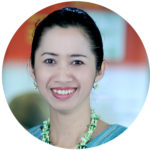 Nithima Chaowalit Ratanasit, M.D.
Nithima Chaowalit Ratanasit, M.D.
When Nithima Chaowalit Ratanasit, M.D. (CV ’04), came to Mayo Clinic in Rochester from Bangkok, Thailand, for a research fellowship in echocardiography, that specialty was new in her country. Two of her colleagues had journeyed to Mayo Clinic for echocardiography fellowships, and she followed suit. When Dr. Ratanasit returned to Bangkok, her hospital had two echocardiography machines. Today it has almost 20, a larger echo lab and five cardiologists specializing in echo. Since her time in Rochester, Dr. Ratanasit wrote the first textbook about stress echocardiography published in the Thai language.
Paul Underwood, M.D. (MED ’84, I ’87), set out to become a general practitioner in his hometown of Knoxville, Tennessee. He attended Mayo Clinic for medical school and ended up in Phoenix, Arizona, as an interventional cardiologist. After 25 years in private practice, he transitioned to the medical device industry. For the last nine years, he’s worked at Boston Scientific to develop cutting-edge technologies for interventional cardiologists around the world.
Jeff McKenzie, M.D. (MED ’09), trained in anesthesiology at high-profile, high-volume academic medical centers — Mayo Clinic and Duke University. He recently returned to his hometown, Billings, Montana, where he’s the only cardiac anesthesiologist board certified in transesophageal echocardiography (TEE). He gets to keep a connection to Mayo Clinic at his new position — Billings Clinic is part of the Mayo Clinic Care Network.
In a world of Mayo alumni overachievers, Andrew Landstrom, M.D., Ph.D. (MDPH ’12, MPET ’12), is an overachiever’s overachiever. He simultaneously completed postdoctoral clinical and research fellowships at Baylor College of Medicine in Houston, Texas, in pediatric cardiology and molecular physiology/biophysics, respectively, and then trained in electrophysiology and start a basic science research lab at Texas Children’s Hospital, focusing on determining the genetic and molecular causes of arrhythmias, cardiomyopathies and heart failure in children. He received a mentored clinical scientist development award (K08) from the National Institutes of Health. As of August 2018, he has moved across the country and is on staff at Duke University School of Medicine.
Aaron Mangold, M.D. (TY ’12, DERM ’15), has come a long way from Wallace Township, Illinois, population 491. After pole vaulting his way through four years of high school and college, he launched himself into a medical and research career that has garnered multiple Mayo Clinic and industry grants, a Career Development Award from the Dermatology Foundation, and a Patient Hero Award from the American Society of Dermatologic Surgery. The latter recognized his public education and lobbying efforts to lift the ban on children carrying and applying sunscreen in schools, camps and other government-operated facilities. His future’s so bright, he’s gotta wear shades. Or rather, he chooses to wear shades as part of his skin cancer prevention practices.
Only 8 percent of practicing urologists in the U.S. are women, and that includes Priyanka Gupta, M.D. (MED ’09), at the University of Michigan. She was attracted to the specialty for the mix of procedures, patient relationships and opportunities for international work. She has a toddler, she’s working to develop an international residency program, and she’s helped to recruit another Mayo Clinic alumna to the Michigan practice — challenging the male dominance of the profession, one woman at a time.
Amelia Adcock, M.D. (TY ’10, N ’13, CBVD ’16), likes a challenge. She spent a couple of years in the Peace Corps in Paraguay and attended medical school in Puerto Rico for the bilingual culture opportunity. Now she’s associate director of the West Virginia University Stroke Center and director of the Center for Teleneurology and Telestroke. She’s starting a stroke fellowship and conducting stroke research. She’s half of a two-physician couple with three kids under 5. Finding balance in her life so she’s fulfilled professionally and personally is a top priority and her biggest challenge.
Brian Braithwaite, M.D. (MED ’11), completed a combined six-year M.D./J.D. program through Mayo Clinic Medical School and Arizona State Law School in the hope that he could practice clinical medicine, with a greater understanding of physicians’ rights and medical malpractice. After completing an anesthesia residency and a pain fellowship, he moved to the greater Cincinnati area, where he is now a partner in an interventional pain management practice.
Midwesterner Jennifer Kruse, M.D. (MED ’09, BMS ’14, PCON ’14), went to Los Angeles for residency after medical school at Mayo Clinic and got hooked on the sunny lifestyle. She returned to Mayo Clinic for fellowship but went back to California for psychiatry practice and to raise her family. She always knew she wanted to teach, and she’s doing that at UCLA, where she directs a newly accredited psychiatry fellowship in addition to a robust clinical practice and budding research career.
Aaron Mansfield, M.D. (I ’09, CI ’11, HEMO ’13), is only five years out of training and already has made a big name for himself and played a key role in drawing national attention to Mayo Clinic. He’s accomplished this through clinical trials for lung cancer and mesothelioma that he’s initiated or brought to Mayo Clinic. His CV lists more than 30 clinical trials either underway or recently completed, and 81 peer-reviewed publications. He just received a competitive National Cancer Institute Cancer Clinical Investigator Team Leadership Award. The future looks bright for this native Californian.
Anantha Santhanam, Ph.D. (ANES ’06), is pursuing a career in delivering solutions for precision medicine. After postdoctoral training and two additional years at Mayo Clinic, he left academia for entrepreneurship. He got his MBA, joined a start-up company that uses big data to drive variation and redundancy out of health care, and cofounded a nonprofit organization to advance Alzheimer’s disease diagnostics and care. He has taken the position of vice president of product marketing for CQuentia to deliver pharmacogenomic solutions and advance human health by leveraging advancements in molecular science and technology.
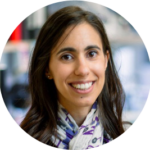 Almudena Martinez-Fernandez, Ph.D.
Almudena Martinez-Fernandez, Ph.D.
Almudena Martinez-Fernandez, Ph.D. (CV ’12), was enmeshed in cardiovascular research at Mayo Clinic for six years, completing a fellowship in cardiac regenerative medicine. Her research focused on finding the best stem cells to regenerate the heart. Her mentors at Mayo Clinic described her as being in the forefront of cardiac regeneration and someone who would drive the field forward. Two years ago she left Mayo Clinic to focus on translational regenerative medicine — bringing projects to clinical trials. Despite a new focus, she’s determined to be a force in driving regenerative medicine forward.
Darren Casey, Ph.D. (ANES ’11), isn’t a Midwesterner by birth, but he is by choice. He grew up in southern California and lived in New York and Florida before landing in at Mayo Clinic in Rochester, Minnesota, for a postdoctoral research fellowship. Since 2013 he’s been in Iowa City, Iowa, studying cardiovascular physiology. He plans to stay in the Hawkeye State as long as the work remains rewarding. In fact, he’s told his wife he won’t retire — he plans go to well beyond age 70, saying, “As long as there’s interest, I’ll keep doing it.”
Janelle Fox, M.D. (PRES ’07, U ’11), completed a urology residency at Mayo Clinic in Rochester during a deferment of her military training. Since completing a fellowship in pediatric urology at Children’s Hospital in Pittsburgh, she’s served in the U.S. Navy, based out of Portsmouth, Virginia. A pediatric urologist in the Navy, you might ask? She provides pediatric urology care to military dependents at three locations in Virginia and North Carolina as well as provides general urology services. Semper fortis.
Christine Klassen, M.D. (I ’15), trained at Mayo Clinic in Arizona and is now on staff at Mayo Clinic in Rochester, focusing on the Breast Clinic. She’s involved with efforts to study breast cancer in neurofibromatosis patients who, it’s recently been discovered, are at high risk for breast cancer at an early age. She felt drawn to work in breast cancer because her mother is a survivor of stage 3 triple negative breast cancer.
Juliana Perez Botero, M.D. (I1 ’12, I ’14, HEMO ’17), a native of Colombia, had never considered training in the Midwest. But fate landed her at Mayo Clinic in Rochester for a visiting clerkship in 2010. “It’s hard to find medical centers in the U.S. that will take students from other countries, especially from a new medical school like mine,” she says. Once she was at Mayo, it became her dream to train there, but she didn’t think she’d get in for residency. “Mayo must have seen potential in me.” She stayed for six years of residency and fellowship. She recently found her dream job at the BloodCenter of Wisconsin.
At the end of his clinical training in cardiology in his native Argentina, Alejandro Chade, M.D. (HYT ’03), went to Mayo Clinic in Rochester for a few months to learn echocardiography. He was tempted to return to Mayo for a yearlong research fellowship and seized the opportunity. That decision changed the course of his career. He gave up clinical practice for an academic research career — now studying therapeutic strategies for renovascular disease and chronic kidney disease at the University of Mississippi.
As science communications director for Delos Living, Aurelie (Lili) N’songo, Ph.D. (BMS ’17, NBD ’17), focuses on translating complex scientific concepts into approachable, accurate language. She trained as a neurogeneticist at Mayo Clinic in Florida, studying the pathogenesis of Alzheimer’s disease. A career development internship opened her eyes to opportunities outside the lab, and she’s never looked back.
For the last year Matthew Klein, M.D. (MED ’93), has been a senator in the Minnesota Legislature by day and hospitalist by night. When he’d been in office for only a couple of months, most of his medical colleagues were in the dark about his dual identify. When Minnesota Governor Mark Dayton fainted in January 2017 during his televised State of the State address, Dr. Klein (DFL, District 52), seated near the front, ran to catch the falling governor. Dr. Klein’s colleagues at Hennepin County Medical Center (HCMC) suddenly learned one of their own was in the state legislature.
Kara Bliley Cross, Ph.D. (BME ’08), has worked for Medtronic for the last seven years — first in Colorado and now in Orange County, California. With an undergraduate degree in biomedical engineering and a graduate degree in biomedical engineering from Mayo Clinic Graduate School of Biomedical Sciences, she thought she’d work in medical device design and development. Her career path led her toward product quality assurance for structural heart valve therapies, and she loves her role at a leading device manufacturer.
Christopher Boswell, M.D. (MED ’13, FM ’16), is only a year past training but feels right at home teaching medical students and family medicine residents and practicing full-spectrum family medicine at Mayo Clinic in Rochester. His patients stand to benefit from his unique experience on the other side of the exam table — he battled cancer during medical school.
Victoria Gómez, M.D. (I ’11, GI ’14, GIAE ’15), is from Texas by way of Santiago, Chile, trained at Mayo Clinic in Florida and in Rochester, and assumed she’d return to Texas, where her parents live. But the appeal of the Jacksonville area and the “dream job” intervened, and she’s on staff in GI endoscopy at Mayo Clinic. In addition to her regular practice, she pioneered a bariatric endoscopy practice that expanded this fall.
Jason Golbin, D.O. (THDCC ’08), says many of his fellow lifelong New Yorkers believe medicine begins and ends in the Empire State. He gave the Upper Midwest a chance for his fellowship and “was blown away” by the quality of care delivered at Mayo Clinic. In his new position as chief quality officer for the Catholic Health Services system of Long Island, he is emulating Mayo’s approach to patient care.
Katrin Wacker, M.D. (OPH ’06), completed a postdoctoral clinical research fellowship in the Department of Ophthalmology at Mayo Clinic in Rochester. She fit the fellowship into her residency program in her native Germany. She has returned home to Germany and continues to collaborate with Mayo Clinic. She hopes to further an evidence base for more precise treatment of Fuchs’ endothelial corneal dystrophy.
Thais Coutinho, M.D. (I ’08, CV ’12, CVEC ’13), has broken the glass ceiling only four years since completing her training. She’s the first woman – and the youngest person – to have a division chief position at the University of Ottawa Heart Institute. Read about the new chapter of this alumna who journeyed from Brazil to Minnesota to Canada to make her mark on medicine.
As the new deputy medical director for the Minnesota Department of Health, Malini DeSilva, M.D. (MED ’09), has had to hit the ground running. She assists with infectious disease outbreaks, including a recent measles outbreak in the Somali community in Minneapolis. She shares lessons learned from this and international disease outbreak experiences.
Three years post-residency, Jewel Kling, M.D. (I ’13), is focused on establishing and building her practice in women’s health at Mayo Clinic in Arizona. She’s co-medical director of a new community-based clinic in downtown Phoenix, in conjunction with St. Vincent de Paul, where students from the brand new Mayo Clinic School of Medicine – Arizona campus will care for patients.
After completing his residency in dermatology at Mayo Clinic, Ali Alikhan, M.D. (DERM ’13), joined the dermatology staff at the University of Cincinnati, where he is director of clinical trials, co-director of the residency program and clinical assistant professor of dermatology. He’s about to embark on another new chapter — moving to the Sacramento area in California, where he’ll join a large multispecialty dermatology practice.
Jill Barnes, Ph.D. (ANES ’13), is an assistant professor of kinesiology at the University of Wisconsin-Madison and affiliate faculty member at the University of Wisconsin School of Medicine and Public Health. She completed a postdoctoral fellowship in human integrative physiology at Mayo Clinic School of Biomedical Sciences in 2013. She received the 2014 Edward C. Kendall Mayo Clinic Alumni Association Award for Meritorious Research for her work exploring the interactions of aging, sex differences and cerebral blood flow regulation in humans. Soon thereafter she left Mayo for a tenure-track faculty appointment at the University of Wisconsin-Madison.
Minerva Carrasquillo, Ph.D. (NSCI ’11), is an associate consultant in the Department of Neuroscience and an assistant professor of neuroscience at Mayo Clinic in Florida. She has a big goal. She’d like to find a cure for Alzheimer’s disease, or at least contribute to a cure through genetic research. She recently received a grant from the Florida Department of Health to investigate Alzheimer’s disease in African-Americans – one of eight Alzheimer’s grants Mayo Clinic in Florida received from the state. She juggles her research responsibilities with raising three children – ages 12, 8 and 5.
Amine Issa, Ph.D. (BME ’10, PHYS ’11, CV ’14), is a research fellow in the Division of Cardiovascular Diseases at Mayo Clinic in Rochester. He also is co-creator of Mobalytics, winner of TechCrunch’s 2016 Startup Battlefield. Born in Lebanon, Dr. Issa finished high school at 14, played video games professionally and even climbed Mount Everest for research. Today he’s found a way to marry his two passions – physiology and video games – to create a rewarding, challenging and unpredictable career.
Katheryn Norris, D.O. (FM ’05), is a physician at Yakima Valley Farm Workers Clinic at Grandview Medical-Dental Clinic. She’s also the residency director of the Sollus Northwest Family Medicine Residency Program and the 2016 Washington Osteopathic Medical Association’s Physician of the Year. As a physician, residency director, mentor, spouse and mother, Dr. Norris shares her thoughts on her career, her time at Mayo and what makes a great mentor.
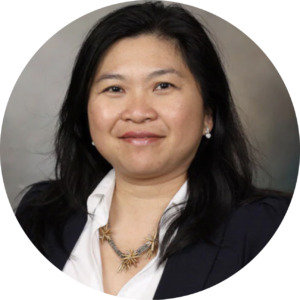
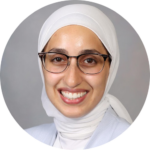
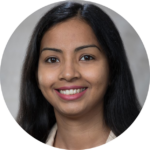

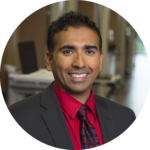
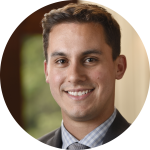
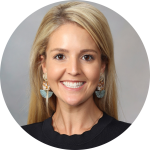

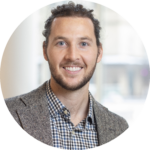



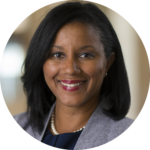
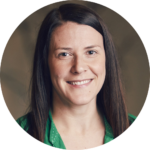


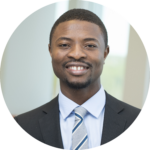
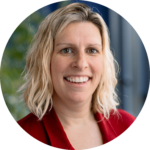
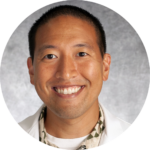




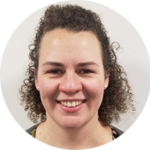
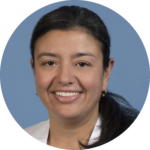
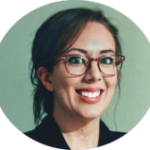


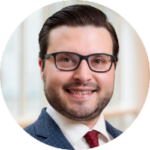
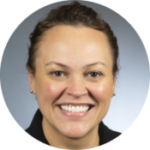
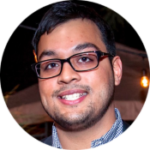

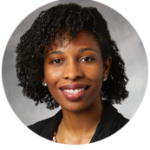
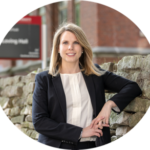
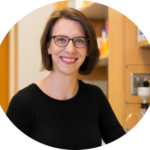





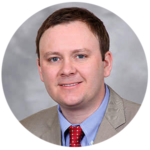
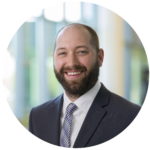
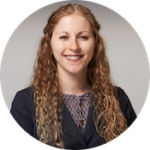

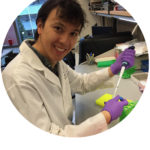
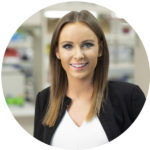
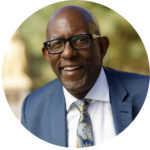






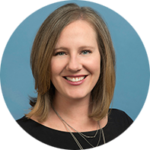
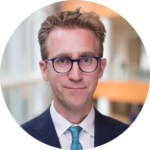

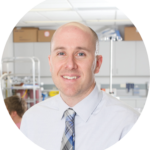
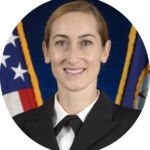
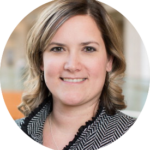
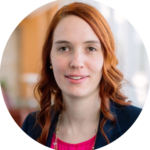



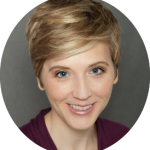
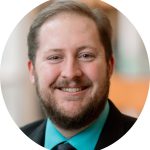
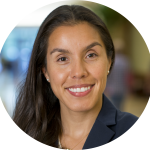
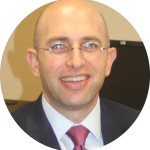
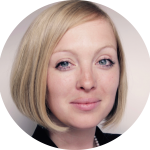
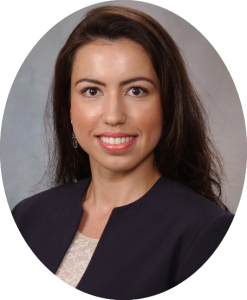 is Coutinho, M.D.
is Coutinho, M.D.